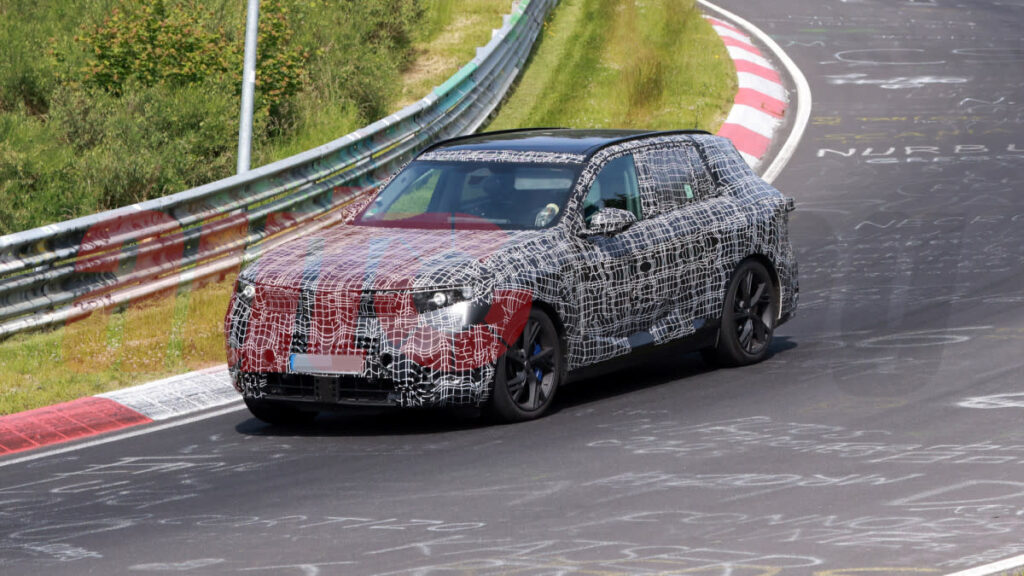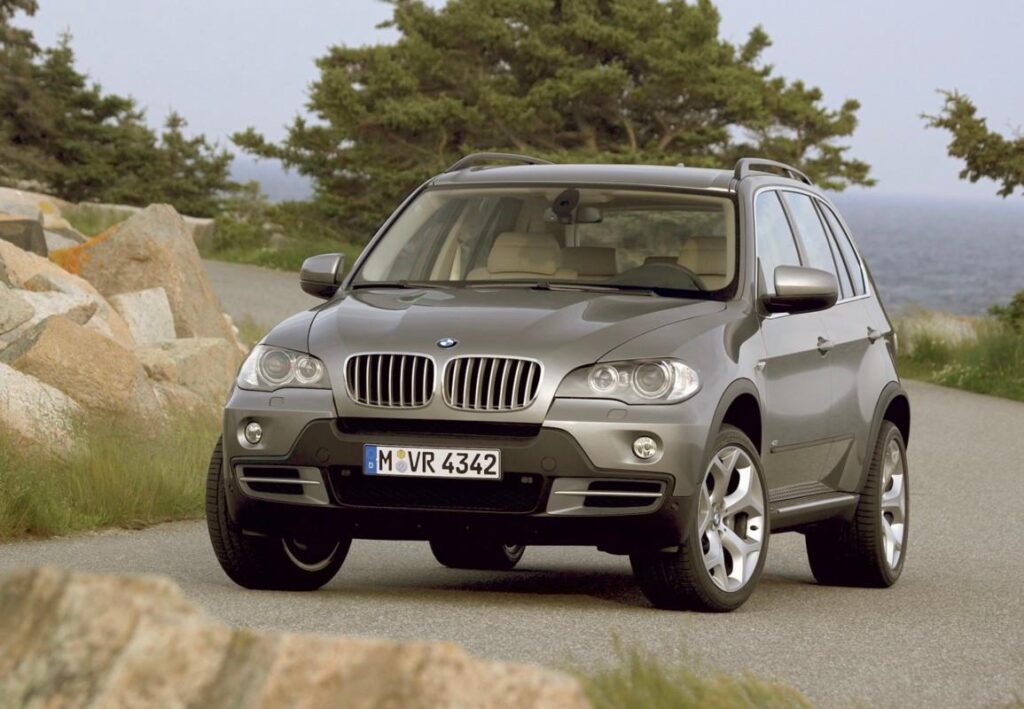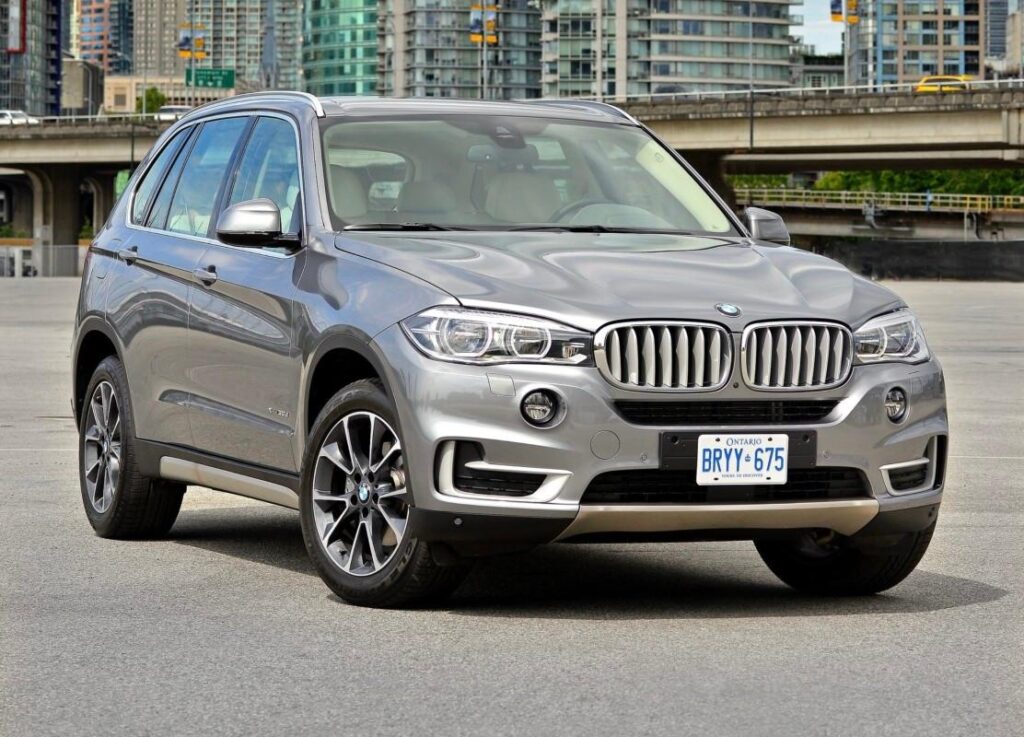Twenty-five years ago, BMW introduced its very first SUV—a bold move from a brand renowned for sporty sedans. But the BMW X5 was no ordinary SUV. Marketed as the first “Sports Activity Vehicle” (SAV), it set out to prove that utility didn’t have to mean a loss of driving engagement. Fast forward to today, and the X5 stands as BMW USA’s best-selling model, a cornerstone of its success in the American market. Let’s take a journey through the four generations of the X5 and explore how this pioneering SUV has transformed over the years.
First Generation (E53) – 2000 to 2006: The Original SAV
The first BMW X5, internally coded E53, made its debut for the 2000 model year. While it wasn’t the first luxury crossover—Lexus had already launched the RX—it broke new ground by focusing on road performance rather than off-road ruggedness. BMW dubbed it a “Sports Activity Vehicle” to emphasize this shift.

Built on a platform shared with the BMW 5 Series, the E53 delivered handling more akin to a sports sedan than a lumbering SUV. It came with a choice of silky-smooth engines: a 3.0-liter inline-six and a 4.4-liter V8, both naturally aspirated. The later 4.8is model pushed power to 355 hp, setting the stage for future high-performance X5 variants.
All-wheel drive came standard, but unlike traditional setups, it was rear-biased—giving the X5 a more athletic demeanor. Transmission options included five- and six-speed automatics, and even a few rare manuals. A significant facelift in 2004 brought sleeker headlights, a revised grille, and other cosmetic tweaks.
Though not designed for serious off-roading, the E53’s high-quality interior, taut chassis, and impressive performance changed expectations for luxury SUVs. It was a resounding success—until Porsche launched the Cayenne in 2002 and raised the bar even further.
Second Generation (E70) – 2007 to 2013: Bigger, Faster, Tech-Savvy
BMW followed up with the E70 generation, on sale from 2007 to 2013. The second-gen X5 grew in size and introduced more features, including BMW’s iDrive infotainment system, optional third-row seating, and a turbodiesel variant.

This generation marked the end of the manual transmission and the beginning of widespread turbocharging. By the end of the E70’s run, engine options ranged from a 265-hp diesel in the xDrive35d to a 400-hp twin-turbo V8 in the xDrive50i.
The big news was the debut of the first-ever X5 M. Powered by a 555-hp turbocharged V8, it could sprint from 0 to 60 mph in just 4.5 seconds—astounding for a vehicle of its size and weight. Styling-wise, the M model brought a more aggressive look, complete with flared arches and quad exhaust tips.
However, not everything was rosy. The E70 is widely considered the least reliable X5 generation. The 2010 model year alone saw more than 20 recalls. Owners reported common issues with the cooling system, PCV valves, and hydraulic systems. Despite these setbacks, the E70 moved the X5 further into luxury territory.
Third Generation (F15) – 2014 to 2018: Quiet Evolution
Arriving for the 2014 model year, the F15 generation was more evolutionary than revolutionary. It maintained a familiar design language, with neat but understated styling. Its focus was on refinement, comfort, and efficiency rather than pure driving thrills.
All engines were now turbocharged, including a new plug-in hybrid (xDrive40e) that promised 56 MPGe and about 14 miles of all-electric range. An eight-speed automatic transmission became standard across the range. The updated X5 M packed 567 hp and slashed the 0-60 mph time to just four seconds.
Technologically, the F15 was the first X5 to offer a touchscreen interface, although BMW retained its iDrive rotary dial. Driver-assistance features were upgraded too, with options like traffic jam assist and automated parking.
Though competent in nearly every respect, the F15 didn’t inspire the same emotional response as earlier models. It was a luxury SUV for the modern age—capable, polished, and tech-laden—but some enthusiasts missed the spirited dynamics of the E53.
Fourth Generation (G05) – 2019 to Present: A Return to Form
Launched for the 2019 model year, the G05 generation is the current iteration of the X5 and represents a strong return to BMW’s core strengths. With improved ride quality, better handling, and a more luxurious interior, the G05 reasserted the X5’s dominance in the segment.
Visually, it’s more muscular and commanding, while inside, it features cutting-edge tech. For 2024, the model was refreshed with BMW’s new curved digital display, which combines the instrument cluster and infotainment into a sleek, single unit. Many physical buttons have been eliminated, though the rotary controller remains.
Powertrain options include the smooth and dependable B58 inline-six, a revised 4.4-liter twin-turbo V8 in the M60i trim, and a vastly improved plug-in hybrid, now known as the xDrive50e. The new PHEV offers a much larger battery with 39 miles of electric-only range—nearly triple that of the outgoing hybrid.

And of course, there’s still an X5 M—now available exclusively in Competition trim with 617 hp. As before, all versions of the G05 use an eight-speed automatic transmission.
Optional features like hands-free highway driving, advanced driver-assistance systems, and semi-autonomous parking continue to push the X5 toward the future while maintaining the performance and prestige that made it famous.
Looking Ahead: Fifth Generation (G65) – Coming in 2027
Though still under wraps, the next-generation G65 BMW X5 is expected to debut for the 2027 model year. Early spy shots suggest a bold new design influenced by BMW’s Neue Klasse concept cars—characterized by minimalist styling, advanced lighting elements, and a tech-focused cabin.
Rumors point to multiple electrified variants, including a fully electric “iX5” and possibly a range-extended hybrid. As seen in BMW’s latest sedans, the future X5 will likely feature larger displays, fewer physical controls, and a heavy emphasis on connectivity and automation.
Whether it sticks with its “Sports Activity Vehicle” identity or adopts a new approach, the next X5 will need to balance heritage and innovation. After all, it has two and a half decades of legacy to live up to.
Final Thoughts: A Quarter Century of X5 Excellence
From its groundbreaking debut in 2000 to its current status as BMW’s U.S. sales leader, the X5 has consistently pushed the envelope. Each generation has brought something new—be it turbocharged power, hybrid capability, or futuristic tech—while maintaining the spirit that defined the original: a driver’s SUV.
In a world where SUVs dominate, the BMW X5 remains a standout not just for what it can do, but for how it does it. And with the next generation on the horizon, the future looks just as promising as the past.




One thought on “BMW X5 Generations Overview: 25 Years of Evolution and Excellence”